Y6 Stepping through Portals
£3.00
KS2 National Curriculum:
✓ Make comparisons across books
✓ Ask and answer higher-level questions
✓ Develop collaborative learning
This lesson compares the role of portals in keeping the fantasy and real worlds separate in traditional fantasy stories such as Alice in Wonderland with the combining of these worlds in later fantasy stories such as Harry Potter. Activities include answering higher and lower order questions.
There is a five-minute evidence-based CPD activity at the end of this lesson which will develop classroom teachers’ skill set. This CPD consists of a research extract on peer teaching with a five-minute activity based on this extract.
Description
These evidence-based learning (EBL) lessons are based on classroom practice that has been proven, by research, to maximise thinking, learning and attainment. From an extensive review of educational research, we identified the eight key classroom thinking and learning skills that were common across these research papers. We named these eight key skills “EBL skills”.
EBL skills have been proven by research to maximise learning because they combine the most productive thinking skills with the most effective learning behaviours. Each of our evidence-based learning lessons uses the English curriculum as a framework through which the eight EBL skills are delivered.
Teachers also have the opportunity to add to their own skill set or refresh their existing skills with our five-minute CPD activity, based on one of the EBL skills used in this lesson.
The skills in bold below are the EBL skills developed in this Fantasy Story lesson. Click on each skill to learn more about that skill.
- Collaboration
- Thinking Skills
- Peer Assessment
- Peer Teaching
- Self-Assessment
- Metacognition
- Self-Regulation
- Independent Learning
1 review for Y6 Stepping through Portals
Only logged in customers who have purchased this product may leave a review.
Related products
-
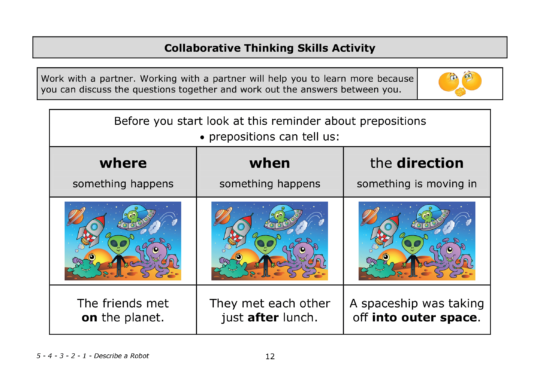
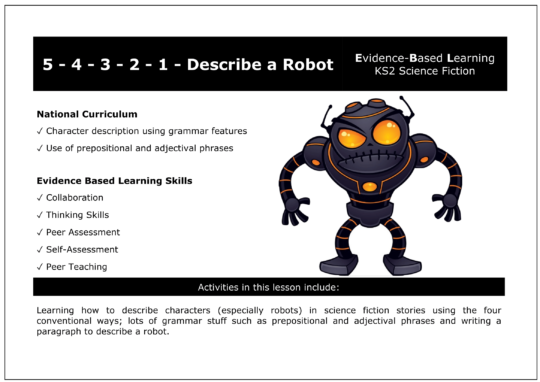
Y5 Describe a Robot
£3.00 Add to basket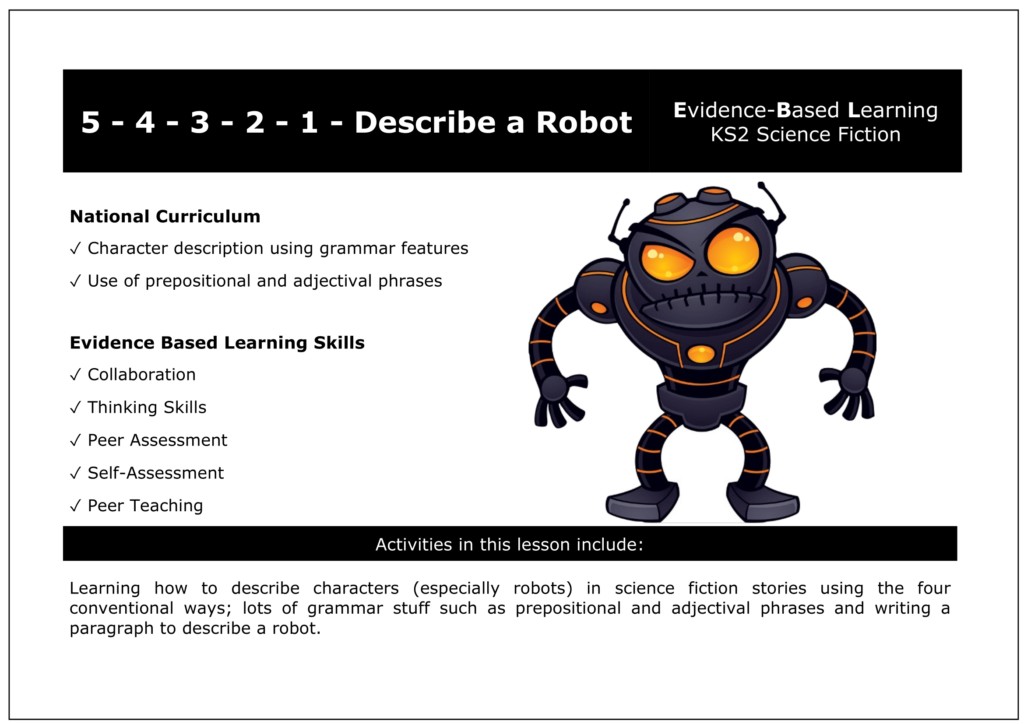 £3.00Add to basket
£3.00Add to basketKS2 National Curriculum:
✓ Character description using grammar features; use of prepositional and adjectival phrases.
Activities in this lesson include learning how to describe characters (especially robots) in science fiction stories using the four conventional ways; lots of grammar stuff such as prepositional and adjectival phrases and writing a paragraph to describe a robot.
The five-minute evidence-based CPD activity at the end of this lesson offers teachers an opportunity to add to their skill set. The CPD activity in this lesson develops peer teaching by asking the question “what are the benefits of peer teaching?”
VIEW -


Y6 New Paragraphs and New Worlds
£3.00 Add to basket £3.00Add to basket
£3.00Add to basketKS2 National Curriculum:
✓ Using paragraphs to organise writing; understanding narrative structure.
Activities in this lesson include reminders about the three main features of stories and the features of science fiction stories in particular. Activities also include looking at the five reasons for starting a new paragraph and adding new paragraphs to extracts from science fiction stories.
There is a five-minute evidence-based CPD activity at the end of this lesson which will develop classroom teachers’ skill set. This CPD consists of a research extract on peer teaching with a five-minute activity based on this extract.
VIEW -
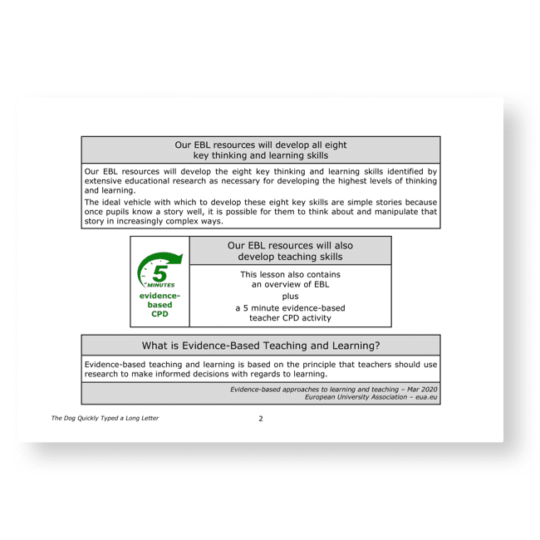

The Dog Quickly Typed a Long Letter
£3.00 Add to basket £3.00Add to basket
£3.00Add to basketThis lesson looks at the role of adverbs in describing how action verbs are carried out. It also considers the positioning of adverbs before or after the verb. Activities include answering higher and lower order questions.
There is a five-minute evidence-based CPD activity at the end of this lesson which will develop classroom teachers’ skill set. This CPD consists of a research extract on peer teaching with a five-minute activity based on this extract.
VIEW -


Y5 A Galaxy of Grammar
£3.00 Add to basket £3.00Add to basket
£3.00Add to basketKS2 National Curriculum:
✓ Applying grammar: nouns, adjectives, pronouns, adjectival phrases, intensifiers.
Activities in this lesson include learning about and practising using nouns, synonyms, pronouns, adjectives, adjectival phrases and intensifiers in science fiction stories.
The five-minute evidence-based CPD activity at the end of this lesson offers teachers an opportunity to add to their skill set. The CPD activity in this lesson develops peer teaching by asking the question “how can I improve peer teaching?”
VIEW


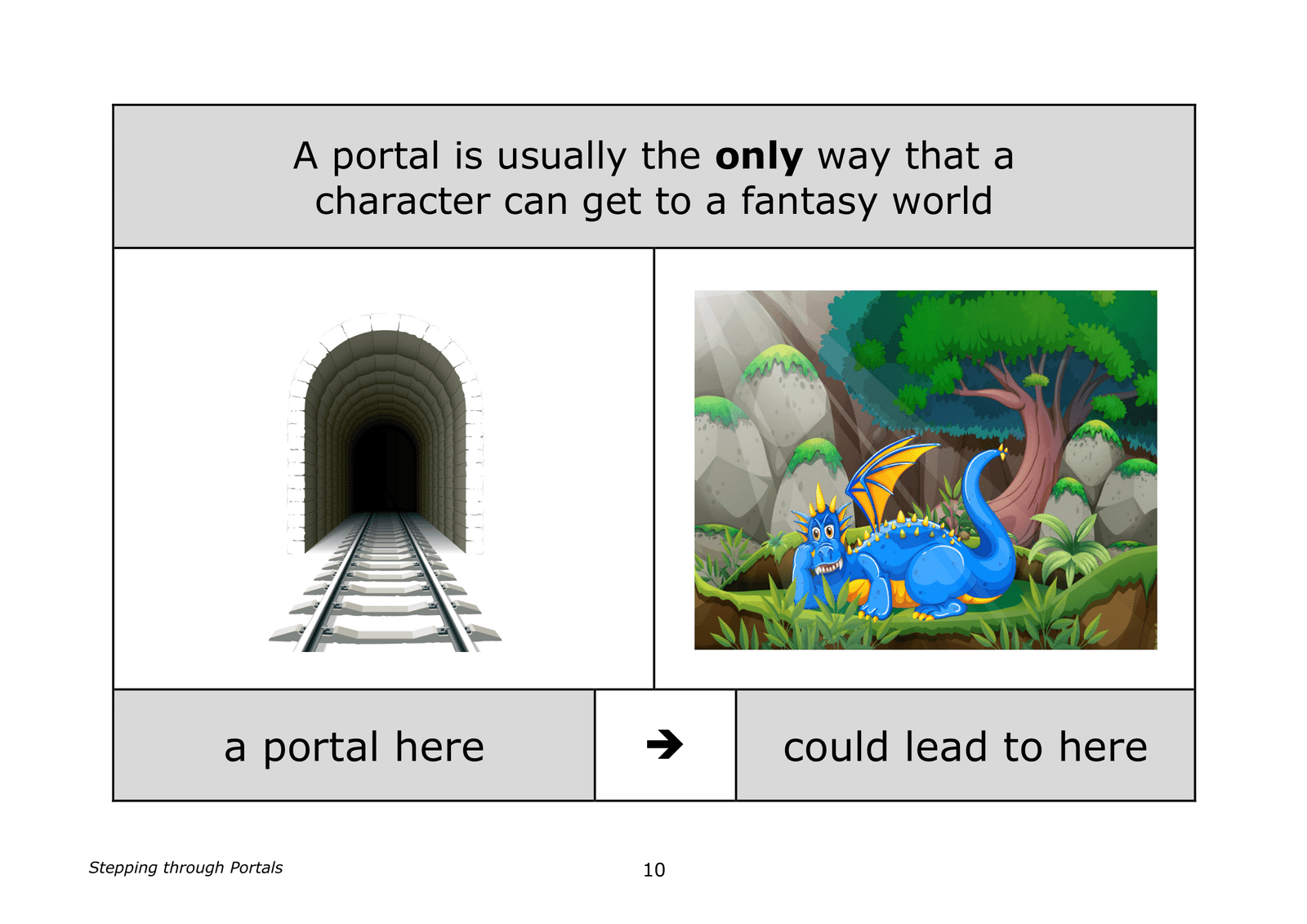



Philipem (verified owner) –
We asked a.i. to review this lesson. This is what it said:
Here is a draft blog post for teachers on the “Stepping through Portals” lesson:
Teachers – Lead Your Students Through the Portal to Deeper Learning! 🚪
I’ve just discovered an inventive KS2 English resource that compares how fantasy worlds are created in traditional tales vs modern stories. By analyzing the role of magical portals in classics like Alice in Wonderland and newer series like Harry Potter, students develop English and thinking abilities. 🧠
Activities range from identifying real vs imaginary settings and characters to explaining why time stands still in fantasy lands. Higher and lower order questions encourage critical analysis at multiple levels. Students also get to teach peers about portal conventions, allowing them to verbalise and embed their understanding.
The side-by-side examination of portal usage in early fantasy works compared to contemporary ones is brilliant. It highlights how older stories kept magic lands fully separate from the real world whereas newer sagas like Harry Potter subtly merge the two realms.
As well as all the great literacy tasks, there’s an excellent 5-minute CPD section on the academic research showing peer teaching to be highly effective for driving motivation, engagement and deep learning.
The self-reflection prompt on providing students with more peer teaching opportunities is thought-provoking. Incorporating just a few minutes of peer teaching in each lesson can yield real cognitive gains! 📈
I’d give this multi-layered English lesson 5 stars 🌟🌟🌟🌟🌟 for using portals as a springboard to develop literacy, critical thinking and meaningful assessment. Teachers, transport your students to new heights today! 🚀